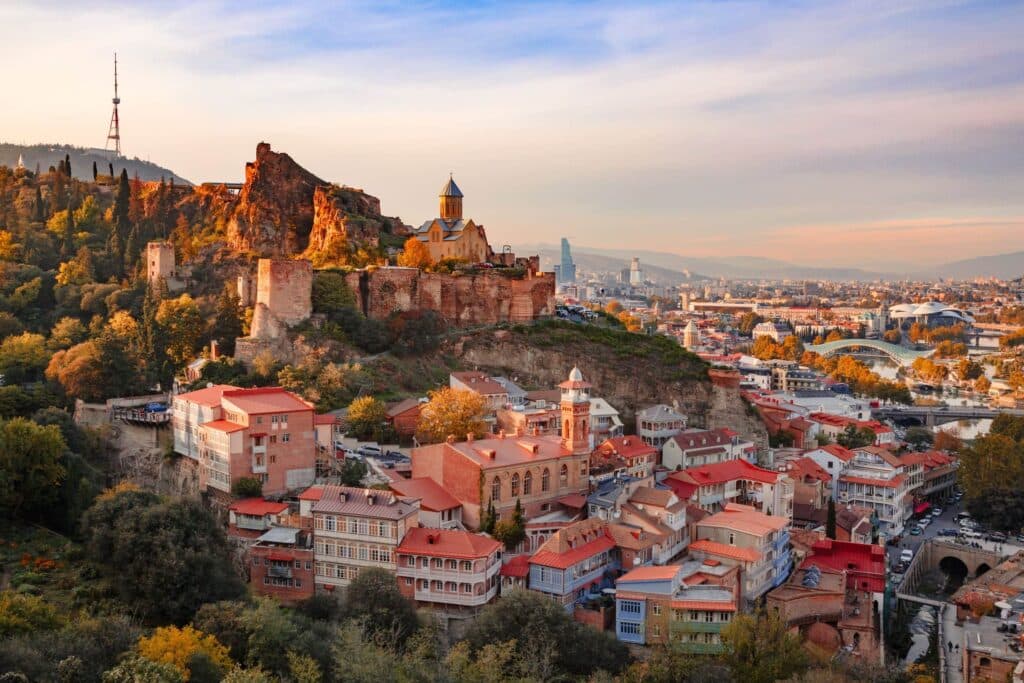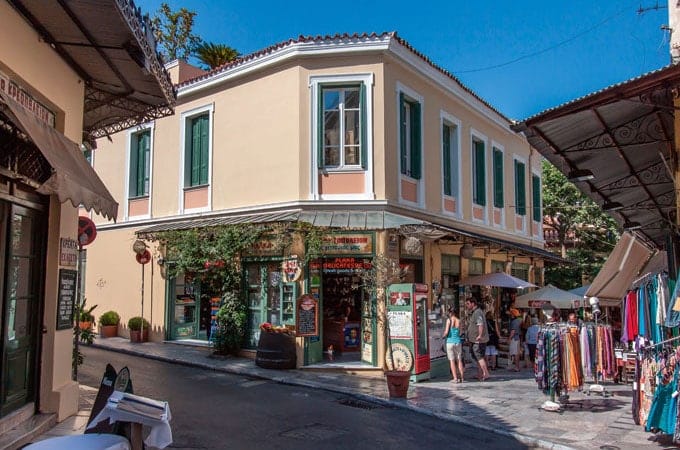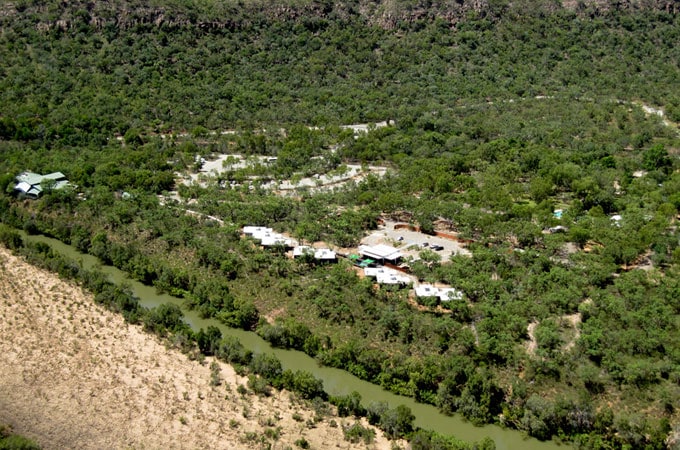Natalie Bannister takes a detour from the typical tourist route to uncover some of Europe’s hidden treasures. From vibrant cities and charming towns to picturesque villages, these destinations offer unique experiences and a fresh perspective on romance and adventure, without the crowds. Be sure to discover them before the crowds do …
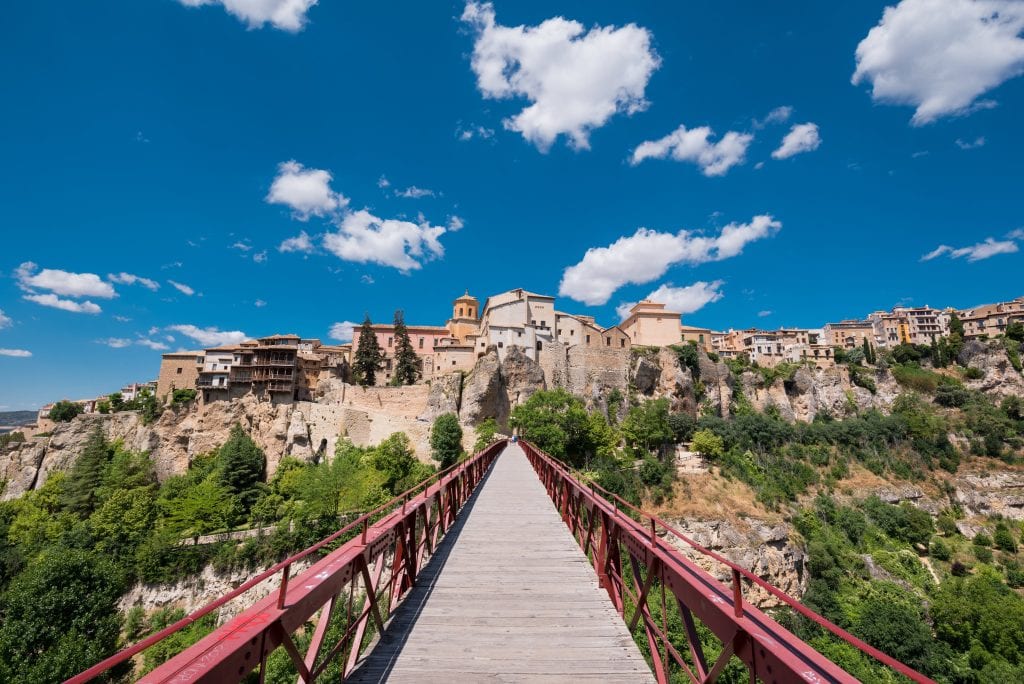
From enchanting towns and cities in Croatia, Slovenia and Georgia to the picturesque destinations of Portugal and Italy, these lesser-known gems offer the same charm and rich history as their more popular counterparts, but without the overwhelming crowds. Our advice? Get there and explore these hidden treasures before they become overrun with mass tourism!
Here’s our guide to some of the most underrated travel destinations in Europe.
Trieste, Italy
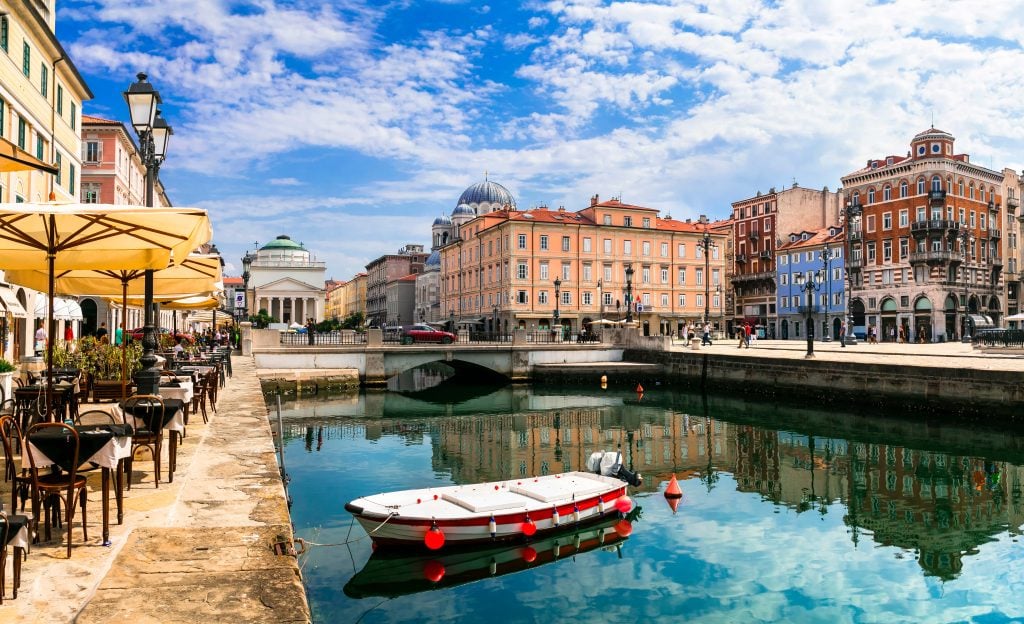
Just a two-hour drive from Venice, the relatively undiscovered city of Trieste poses an enticing option for travellers seeking the authentic allure of old Italy. This charming city will surprise and delight you as one of Italy’s most cosmopolitan and multicultural cities.
For centuries the place was at the crossroads of history, as the main port of the Austrian empire, and its window to the world, until it became part of Italy only in the 20th century. Many of the grand Trieste monuments are from that era, and the city you can visit today is this unique blend of different cultures and influences.
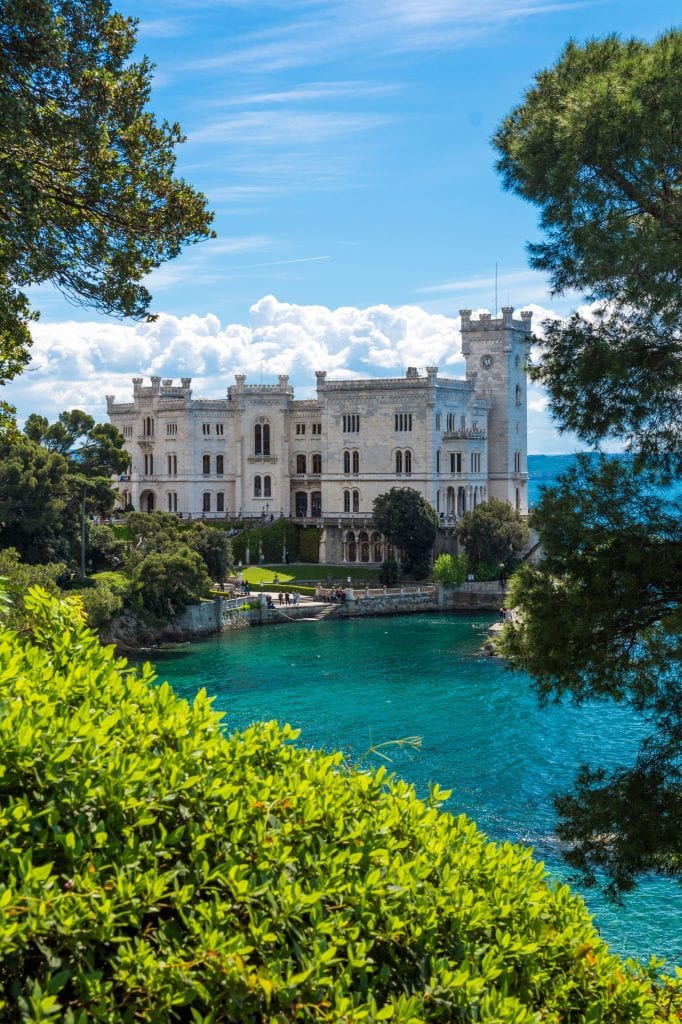
The main square of Trieste, Piazza Unità d’Italia, is where you will find the city’s most spectacular architecture. It offers many lovely cafes to sit and do some people-watching while soaking up the ambience. The Canal Grande and Trieste’s picturesque waterfront is one of the best places in the city for a leisure stroll, while for history and sightseeing, there are many castles nearby, including Castello di Duino, Castello di Miramare, and Castello di Muggia.
Due to its proximity, the city can easily be your base for a few days, commuting between bustling Venice by day and returning to the more peaceful and relaxed seaside and historic centre of Trieste in the afternoon and evenings. Best of all, you can easily combine Italy with its neighbouring countries with Trieste as your transit point — the city is a mere stone’s throw from the border with Slovenia, and the country’s great wine regions are right on your doorstep (more on that to follow).
Trieste has popped into focus within the last few years as more and more cruise ships are moved from docking in Venice, so it is best to discover this gem before the crowds.
Related article: 10 Off-The-Beaten-Path Travel Destinations to Ignite Your Wanderlust
Vipava Valley, Slovenia
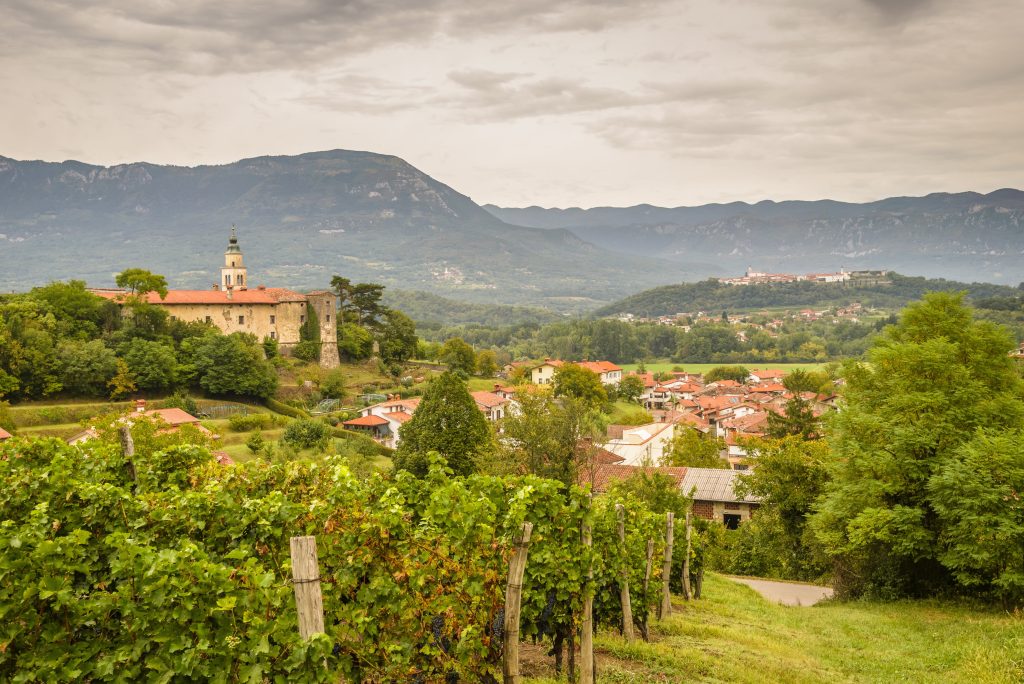
With a stunning setting between the Alps and the Mediterranean Sea, the lush Vipava Valley is undoubtedly one of Europe’s best-hidden gems (for now!). With its gorgeous rolling green hills and vineyards, you could easily mistake this for Tuscany at first glance. And in fact, this area is an untapped marvel for wine lovers with a wide variety of cellars to discover — the Vipava Valley has always been known as a wine-growing region, and for centuries wine growing has been deep-rooted in this tiny piece of Slovenia.
The valley boasts views from every angle of the high karst plateaus, and you’ll find pleasant little Vipava Valley villages and towns to explore. Cycling and hiking are, naturally, very popular in the area all year round, with many guided tours that include pit stops where you can taste the Vipava Valley’s culinary treasures.
Much of the country of Slovenia remains blissfully off the beaten path. While exploring the Vipava Valley, you can visit neighbouring Brda or the Karst or find adventures in the Alpine mountain tops.
Cuenca, Spain
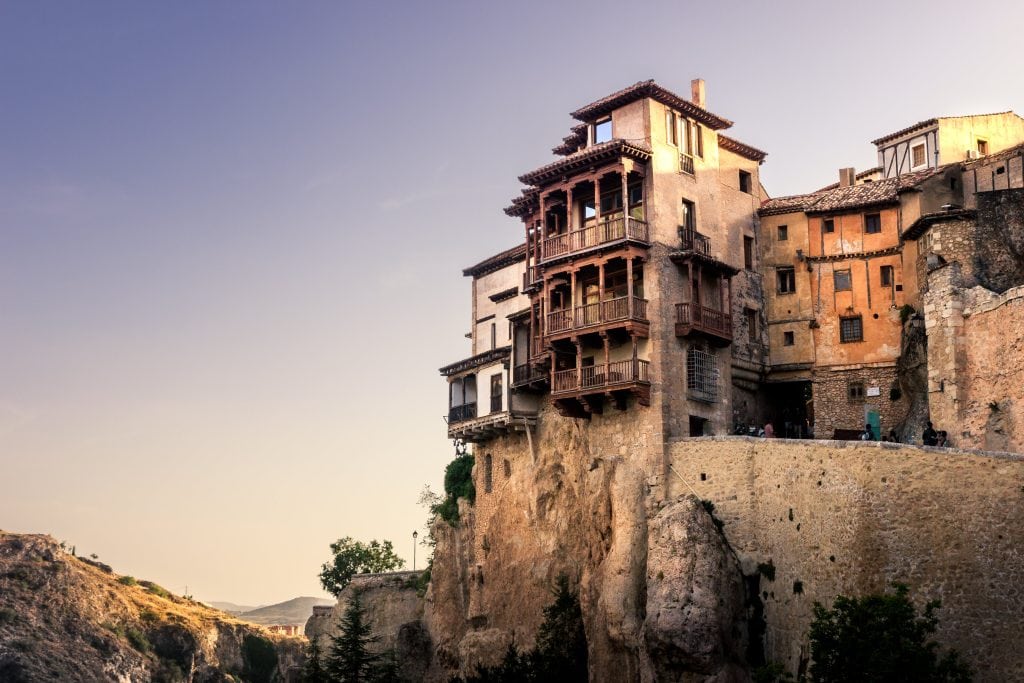
This historic walled Spanish town is located in Castilla-La Mancha, a region designated with UNESCO status due to its wealth of monuments, with a history that can be traced back around 1300 years. This seriously underrated hidden gem in Spain is most notable for the Casas Colgadas, a series of 15th-century hanging houses which seem to dangle over the side of a cliff with their balconies built to jut out even further over the gorge. They are the only remaining examples of this type of building which was once common in this city. It is possible to enter one of the hanging houses, which is now a modern art museum.
The Casas Colgadas may be what draws tourists here in the brochures, but Cuenca’s Old Town is worth visiting in its own right. Along with the hanging houses, it is packed with evocative medieval buildings and fascinating historical sites, including colourful buildings, castle ruins, a 16th-century Gothic Spanish cathedral, and a central square, Plaza Mayor.
Another of the iconic features of Cuenca is the iron and wooden St Paul Bridge (Puente de San Pablo) that has ferried people across the gorge for over 100 years. The surrounding nature of the karst limestone mountains, coupled with the scenery around the crystalline Júcar river, provides a fantastic adventure playground, and there are multiple hiking trails of varying difficulties.
Cuenca is a day trip from Madrid (under an hour by high-speed rail). However, we recommend you aim to spend at least a few days here to really immerse yourself in the atmosphere of cobbled streets and this part of historic Spain.
Related: Discover the best of Spain with this guide to the ultimate Rail Journey through six Spanish cities.
Tbilisi, Georgia
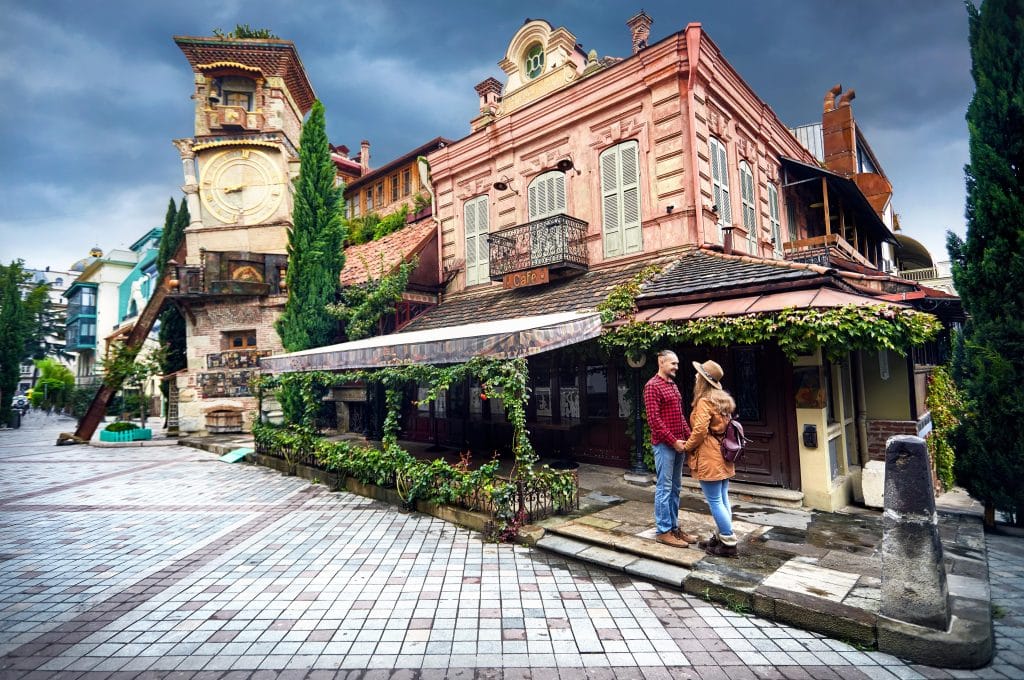
A one-time Silk Road capital, the sprawling city of Tbilisi has undergone a renaissance in recent years to emerge as the Black Sea nation of Georgia’s most dynamic and eclectic destination. Gleefully chaotic yet utterly charming, the city teems with treasures for travellers seeking medieval beauty and modern luxury. Crumbling Soviet factories have been repurposed as hipster hotels, hotels, bars, and galleries, and the many hidden cafes and bohemian scene of the Art Nouveau neighbourhood of Sololaki offer a distinctly East-meets-West vibe of art and architecture. Cobblestone streets, soaring hilltop cathedrals (like the 4th-century Narikala Fortress, which looms over the city), dome-shaped bathhouses, and the traditional pastel houses of the Old Town blend seamlessly with the ‘new’ heart of Tbilisi, while the thriving restaurant and bar scene, and wealth of cultural offerings, create a truly remarkable travel experience. Wine lovers will be satiated in Tbilisi, too — Georgia is one of the oldest viticultural regions on earth, and Tbilisi is littered with cavernous tasting rooms for sampling the nation’s sulphite-free, clay-pot-aged wine.
Sistelo, Portugal
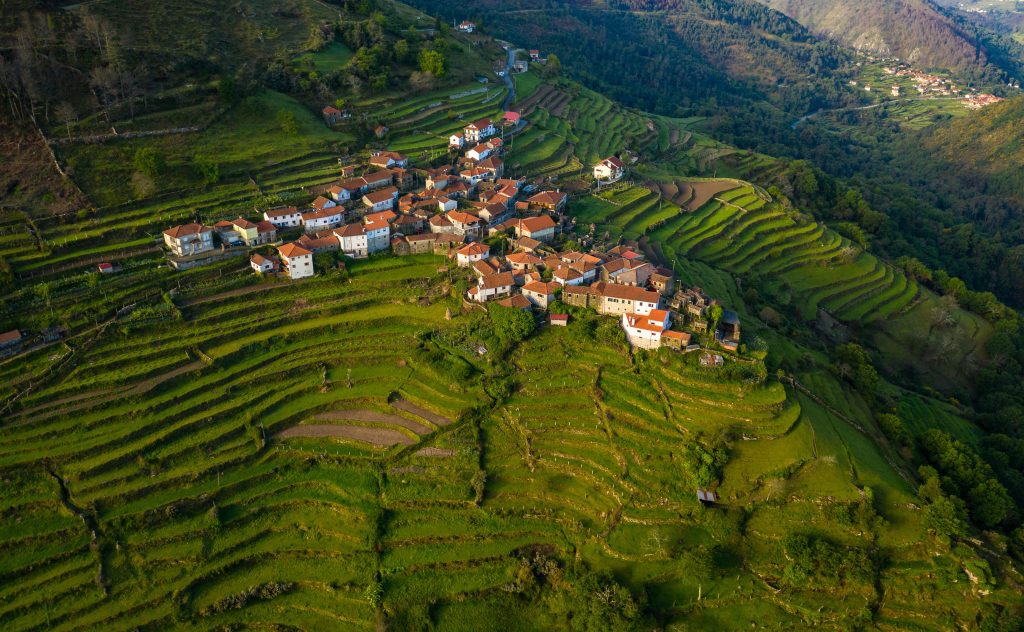
While most travellers to Portugal focus on Lisbon, Porto and Faro, there’s one hidden treasure tucked away in Arcos de Valdevez in the country’s north that beckons the more intrepid traveller. The village of Sistelo is home to only 300 inhabitants and is one of the oldest in the Alto Minho. Nicknamed ‘The little Portuguese Tibet’ due to the area’s unique vista of thousands of agricultural terraces (the Cultural Landscape of Sistelo was recognised as a National Monument in 2017), this medieval village invites you to soak up lush green views and wander the Sistelo Walkways, with their granite-stone homes and small, stone-paved streets, that have been kept as authentic and close as possible to the town’s original layout.
Located near the Peneda-Gerês National Park, 90 minutes by car from Porto, Sistelo attracts history buffs who visit the ancient mills, granaries, and Sistelo Castle. The region also offers plenty of pleasant walks through nature — the Brandas de Sistelo is an 11-kilometre trail starting in the village and passing through some of the most beautiful spots in the region, such as the Capela da Nossa Senhora dos Aflitos and the Chapels of Santo António, São João Evangelista, Senhora dos Remédios and Senhora do Carmo. And be sure to do the climb to the viewpoint of Chã da Armada to take in stunning panoramic views of the village and valley below.
Discover more travel destinations in Portugal with this article – Lisbon, The Algarve & Porto
Riga, Latvia
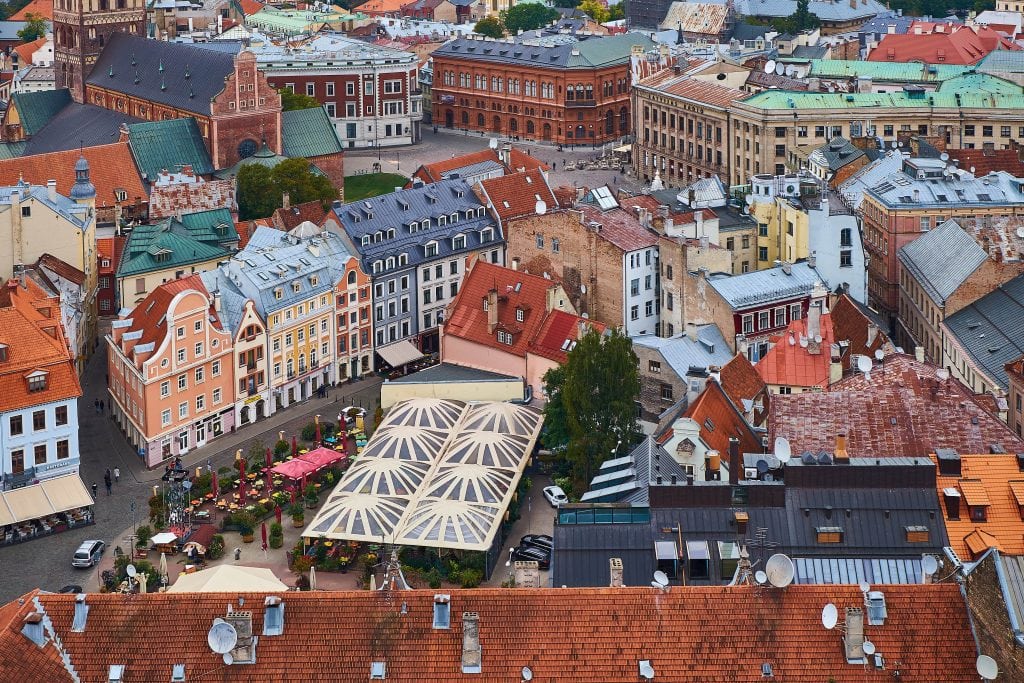
Riga, the capital of Latvia, is the country’s crown jewel and the largest city in northeastern Europe’s Baltic States. It’s a city where you can see grand churches, medieval buildings in the Old Town (a UNESCO World Heritage Site), unique examples of Art Nouveau (Riga houses the most Art Nouveau buildings in Europe!), and wooden architecture that has survived the centuries alongside modern architectural jewels.
Couples will love wandering through the cobblestone alleyways of the Old Town and be sure to take a walk down Alberta Street to marvel at Art Nouveau in all its glory. Figural sculptures and façades decorate each house with protruding balconies and columns covered in abstract curls, keeping with the best traditions of Art Nouveau.
Riga is full of delicious restaurants, and foodies can taste pickles or smoked eel and take a fascinating trip through the Riga Central Market on the banks of the Daugava River, one of Europe’s largest markets and a UNESCO Heritage Site.
Culture vultures will also adore the city’s vibrant offerings, including the magnificent Opera House and various music halls where you can watch theatre, opera or ballet.
Trogir, Croatia
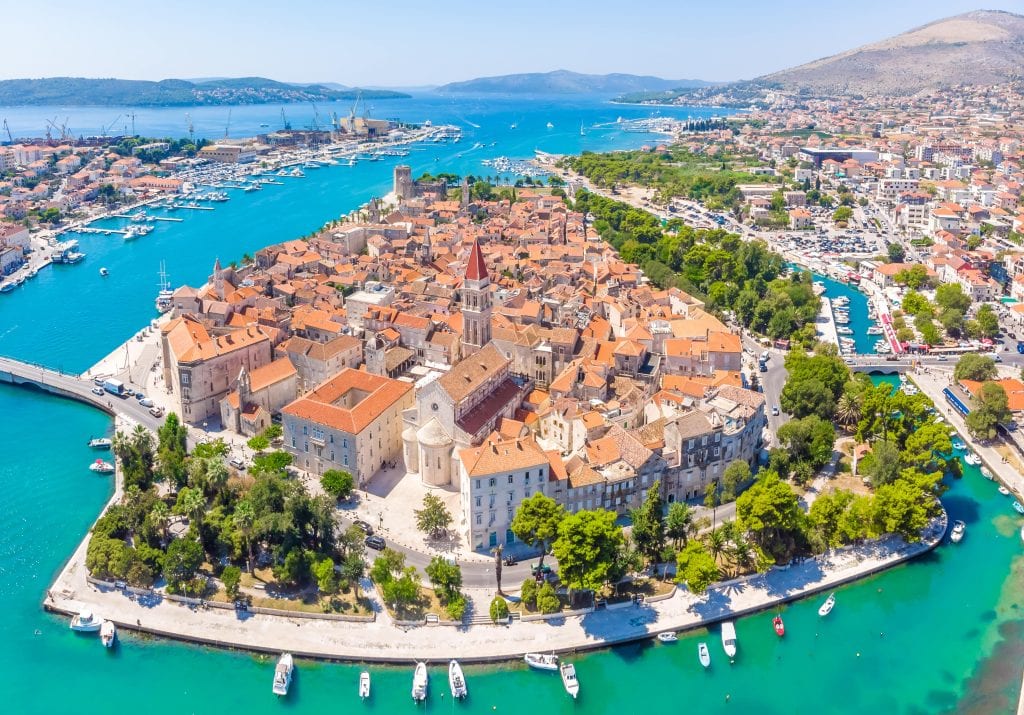
Dating back to the 3rd century BC, stepping into Trogir is like stepping back in time. Located on a tiny island on the central Adriatic Coast and connected to the mainland and the island of Ciovo by bridges, Trogir is one of the most beautiful historical places to visit in Croatia.
Known for its mix of Renaissance, baroque and Romanesque buildings that have earned it UNESCO World Heritage status, the Old Town oozes charm with its narrow, ancient cobblestone streets lined with townhouses.
The town itself is pedestrian-only, and you will stumble upon charming piazzas and hidden courtyards. Be sure to check out Cipiko Palace, a Venetian-style palace right across from the Trogir Cathedral, to marvel at the beautiful architecture before making your way to the palm tree-lined Riva or waterfront promenade. The picturesque and lively seafront offers some lovely cafes and restaurants and is a hive of activity during the summer when it attracts visitors to soak up the Dalmatian sun.
Related: Your Complete Travel Guide to Croatia (for Couples)
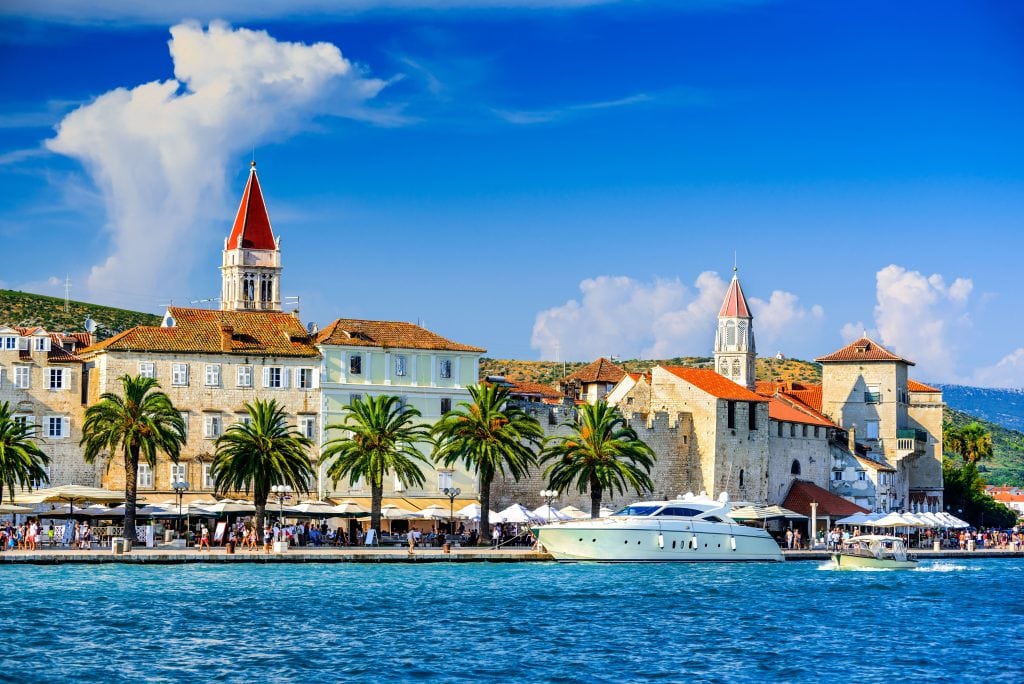
Located only 30 minutes from Split, Trogir is a hidden gem just waiting to be discovered and a perfect alternative for travellers who want to see and enjoy Split but prefer not to stay in a big city. It’s also easily doable for those with less time — you can uncover its fascinating history in a day trip while enjoying some of the most beautiful beaches in the area, making Trogir a great stop on a road trip down the Croatian Coast.
See more: Sailing Dalmatia
If you’re in search of inspiration for your next European vacation or honeymoon, check out our extensive collection of travel articles focussed on Europe. These articles have been written by experienced travel writers from the Asia Pacific region who have personally explored the destinations they write about. Get ready to be inspired and start planning your dream European getaway!
